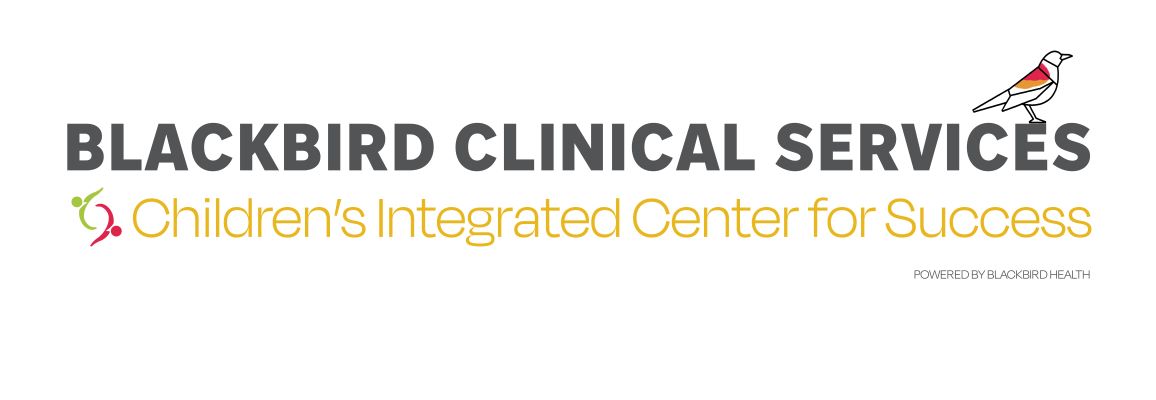Therapy Approaches That Fit Each Patient
Every child and family who comes through CICS’ doors have different backgrounds and characteristics that require unique sets of care to assist with their mental health and wellbeing. Our providers are knowledgable on and equipped to utilize a wide range of therapeutic skill sets and approaches, allowing each patient and their support system to receive the proper therapy techniques that align with their particular scenario and needs.

Learn More About Our Therapy Approaches
CICS providers are skilled in a variety of therapy techniques that allows each and every patient and family to receive the type of interaction that best fits their needs and preferences. Each technique listed below can be further customized to create a unique therapy plan that creates the most effective outcomes for each patient, their family, and the specific scenarios, experiences, and characteristics they hold.
Trauma focused Cognitive Behavioral Therapy
Trauma Focused Cognitive Behavioral Therapy (TF-CBT) is utilized by our providers to work with children and adolescents who are experiencing emotional or behavioral difficulties associated with trauma. TF-CBT can be used with anyone ages 3-18 years old who has experienced a single or repeated experience of trauma, including but not limited to: physical, sexual, or emotional abuse; physical or emotional neglect; domestic violence; caregiver separation/divorce; substance abuse within the home; mental illness within the home; and incarcerated relatives. There is an emphasis on the child and their caregivers learning relaxation and coping skills, implementing healthy parenting skills, processing trauma, and enhancing safety.
Motivational Interviewing
Motivational Interviewing (MI) is a strategy used during therapy to assist patients with reducing ambivalence and strengthening their motivation and commitment to making desired changes in their lives. MI can be implemented to address many aspects of life associated with either decreasing unhealthy life habits or increasing healthy and productive practices. This approach can be effective for adolescents who tend to struggle with low levels of motivation.
Behavior Modification
Behavior modification is implemented by our providers to assist patients and their families with increasing the frequency of positive, productive, and beneficial behaviors in their lives and reinforcing the importance of consistency and effectiveness of rewards and consequences. Through this strategy, patients identify problematic behaviors, recognize triggers that may influence emotional and behavioral difficulties, and develop consequences and rewards. Our providers integrate the families of the patients into this approach by teaching them skills for decreasing a child’s inappropriate behavior while reinforcing appropriate actions.
Exposure and Response Prevention
Exposure and response prevention (ERP) is the industry’s “gold standard” to treat obsessive compulsive disorder and is also effective in providing care to and managing cases of social anxiety and phobias. Although this approach is under the umbrella of Cognitive Behavioral Therapy, ERP distinguishes itself through its focus on new learning and habituation rather than simply distorted thinking. A basic structure for ERP based therapy seeks to identify core underlying fears that lead to obsessions, create a hierarchy for exposure exercises, measure levels of distress, and prevent responses or compulsions.
Acceptance and Commitment Therapy
Acceptance and Commitment Therapy (ACT), which oftentimes is coupled with other approaches such as Exposure and Response Prevention and utilizes mindfulness exercises, focuses on creating a willingness to accept pain and struggle occurring in ones life and using important personal values which involve a commitment to behavior change in order to overcome these challenges and continue to move forward. For instance, if an individual is dealing with significant social anxiety, an ACT approach could revolve around this individual using important values such as being close to family and friends to act as a compass to help them drive their behaviors and decisions in dealing with this anxiety.
Mindfulness
Mindfulness approaches taken by our providers can fall into three distinct categories: Mindfulness-based Stress Reduction (MBSR), Mindfulness-based Cognitive Therapy (MBCT) and Mindfulness Self-Compassion (MSC). In each case, a focus on mindfulness prioritizes returning a patient’s attention to the present through their senses, bodily sensations, or experiences they are taking in at the time. Mindfulness exercises can take many forms, including meditation, diaphragmatic breathing, and mindfulness walking, and can be utilized at any time in any place.
Cognitive Behavioral Therapy
Our provider’s approach to Cognitive Behavioral Therapy (CBT) assists patients with recognizing the relationship between their thoughts, feelings, and actions. CBT can benefit individuals by helping them recognize detrimental patterns and develop patterns to break that cycle and replace the harmful thoughts and behaviors with responses that can be beneficial and productive. This approach to therapy can be especially helpful for people dealing with a variety of difficulties and diagnoses, including anxiety, OCD, low self-esteem, and more.
Ecosystemic structural family therapy
Many times, problems seen in a child can stem from issues present in their family’s structure or dynamics. Ecosystemic structural family therapy works to address these problems by involving the whole family in the therapy process, not just the single patient who presents visible challenges. With all members of the family integrated into this process, dysfunctions in the family system are discussed, individuals discover what each person in the family needs from one another, and plans to address problems within the family structure are created and carried out.
Play therapy
Many children tend to be apprehensive when it comes to therapy. For individuals who struggle with these types of care, especially those 10 years of age or younger, play therapy can serve as a solution that eases the child’s anxiety and removes the issues children encounter with traditional therapy approaches. By intertwining therapeutic skills into a play format that children can understand better and be more receptive to, play therapy can be used to teach social skills and process other challenges such as anxiety and depression.
Dialectical Behavior Therapy
Dialectical Behavior Therapy (DBT) is a type of cognitive behavioral therapy that looks to help people dealing with overwhelming emotions learn to get these feelings and thoughts under control. By intertwining various approaches such as mindfulness, distress tolerance, emotional regulation, and interpersonal effectiveness techniques, DBT teaches new skills to help individuals manage painful and detrimental emotions and decrease relation conflicts that they may encounter.
Structural Family Therapy
Structural family therapy is a mindframe used by therapists to conceptualize problems, functioning, symptoms, and solutions to reach goals in a family setting. While used primarily in family therapy, this method can also be utilized in individual counseling due to the role family habits and actions play on a person’s behavioral functioning.Through this approach, the therapists and families work to uncover habits, patterns, routines, and behaviors that negatively impact the family and try to understand the purpose these presenting problems serve. Additionally, this theory considers the invisible or unspoken roles and rules we have within our families that change through various developmental stages and major family events (such as death and divorce) and serve as sources of tension and problems.
Gottman Method
The Sound Relationship House serves as one of the most significant theories developed by the Gottman Institute, and provides principles for couples to follow in order to move closer to their relationship goals. With a focus on this method, our counselors will walk couples through the Sound Relationship House, held up by trust and commitment, and guide them through the seven “floors” that create healthy and strong relationships: building love maps, sharing fondness and admiration, turning towards instead of away, positive perspectives, managing conflicts, making life dreams come true, and creating shared meaning.

